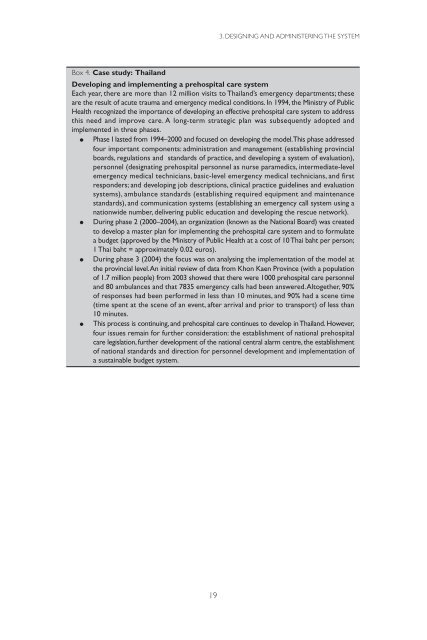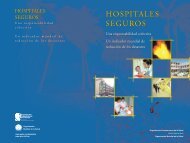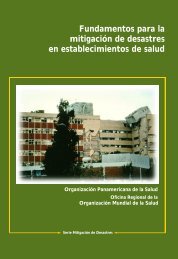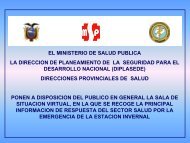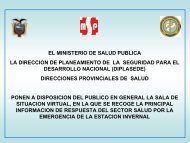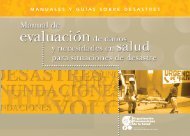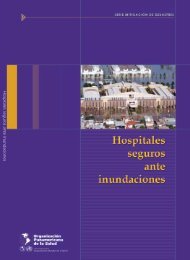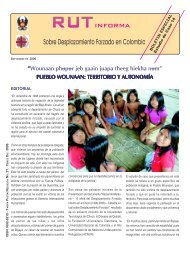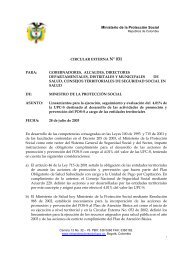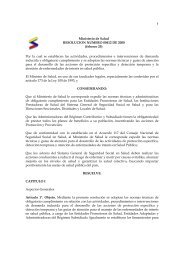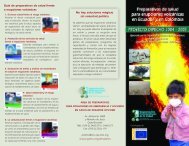Prehospital trauma care systems - World Health Organization
Prehospital trauma care systems - World Health Organization
Prehospital trauma care systems - World Health Organization
You also want an ePaper? Increase the reach of your titles
YUMPU automatically turns print PDFs into web optimized ePapers that Google loves.
3. DESIGNING AND ADMINISTERING THE SYSTEM<br />
Box 4. Case study: Thailand<br />
Developing and implementing a prehospital <strong>care</strong> system<br />
Each year, there are more than 12 million visits to Thailand’s emergency departments; these<br />
are the result of acute <strong>trauma</strong> and emergency medical conditions. In 1994, the Ministry of Public<br />
<strong>Health</strong> recognized the importance of developing an effective prehospital <strong>care</strong> system to address<br />
this need and improve <strong>care</strong>. A long-term strategic plan was subsequently adopted and<br />
implemented in three phases.<br />
● Phase I lasted from 1994–2000 and focused on developing the model.This phase addressed<br />
four important components: administration and management (establishing provincial<br />
boards, regulations and standards of practice, and developing a system of evaluation),<br />
personnel (designating prehospital personnel as nurse paramedics, intermediate-level<br />
emergency medical technicians, basic-level emergency medical technicians, and first<br />
responders; and developing job descriptions, clinical practice guidelines and evaluation<br />
<strong>systems</strong>), ambulance standards (establishing required equipment and maintenance<br />
standards), and communication <strong>systems</strong> (establishing an emergency call system using a<br />
nationwide number, delivering public education and developing the rescue network).<br />
● During phase 2 (2000–2004), an organization (known as the National Board) was created<br />
to develop a master plan for implementing the prehospital <strong>care</strong> system and to formulate<br />
a budget (approved by the Ministry of Public <strong>Health</strong> at a cost of 10 Thai baht per person;<br />
1 Thai baht = approximately 0.02 euros).<br />
● During phase 3 (2004) the focus was on analysing the implementation of the model at<br />
the provincial level.An initial review of data from Khon Kaen Province (with a population<br />
of 1.7 million people) from 2003 showed that there were 1000 prehospital <strong>care</strong> personnel<br />
and 80 ambulances and that 7835 emergency calls had been answered.Altogether, 90%<br />
of responses had been performed in less than 10 minutes, and 90% had a scene time<br />
(time spent at the scene of an event, after arrival and prior to transport) of less than<br />
10 minutes.<br />
● This process is continuing, and prehospital <strong>care</strong> continues to develop in Thailand. However,<br />
four issues remain for further consideration: the establishment of national prehospital<br />
<strong>care</strong> legislation, further development of the national central alarm centre, the establishment<br />
of national standards and direction for personnel development and implementation of<br />
a sustainable budget system.<br />
19


